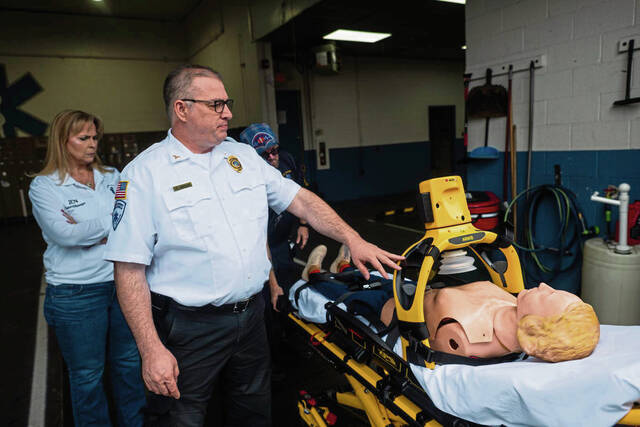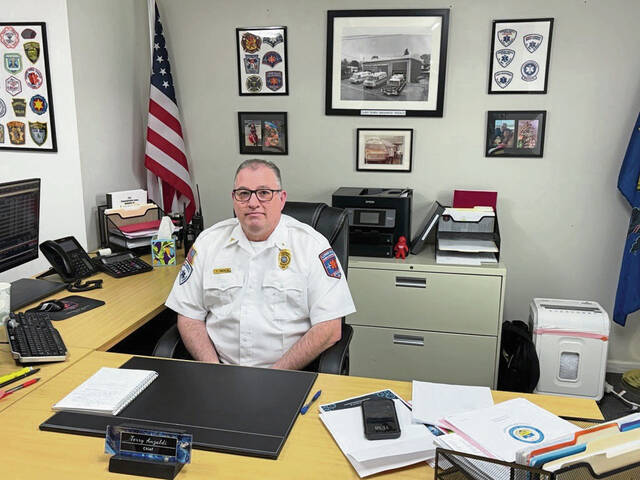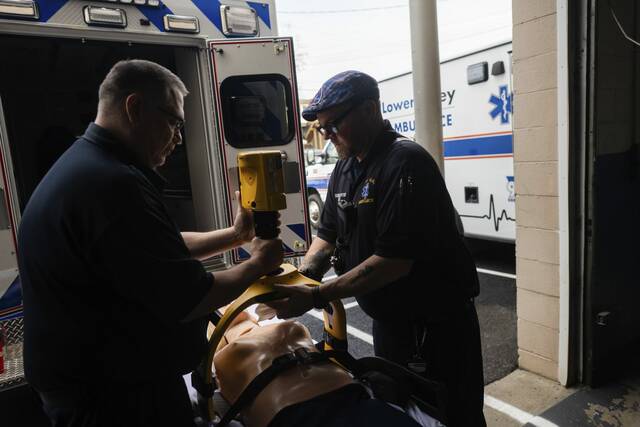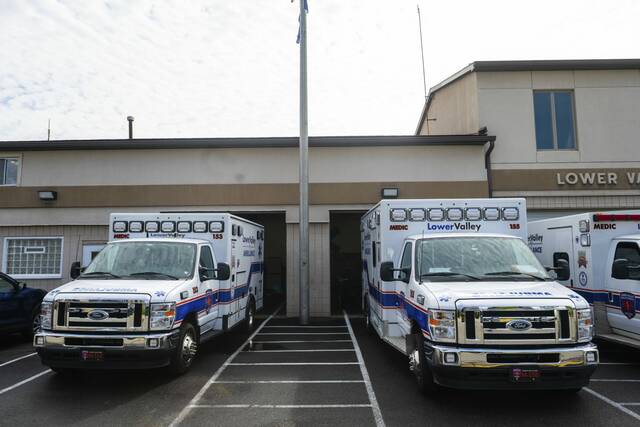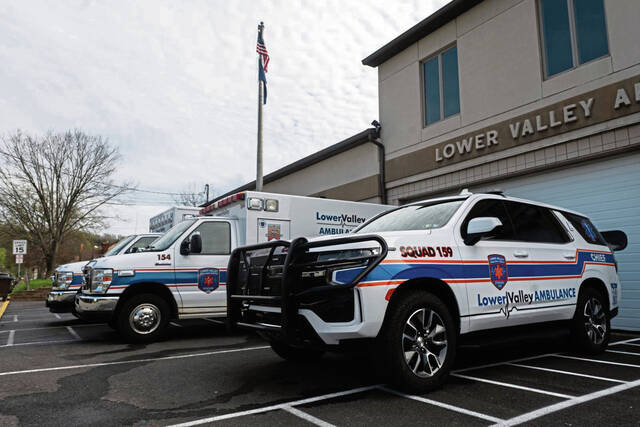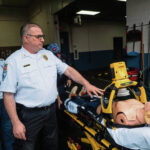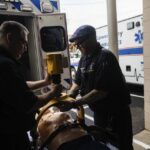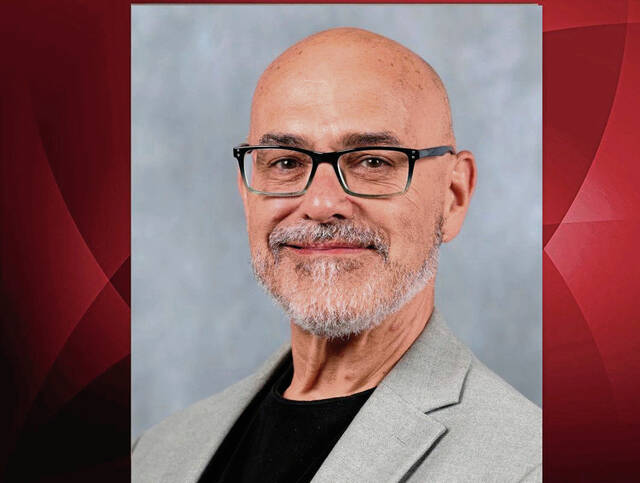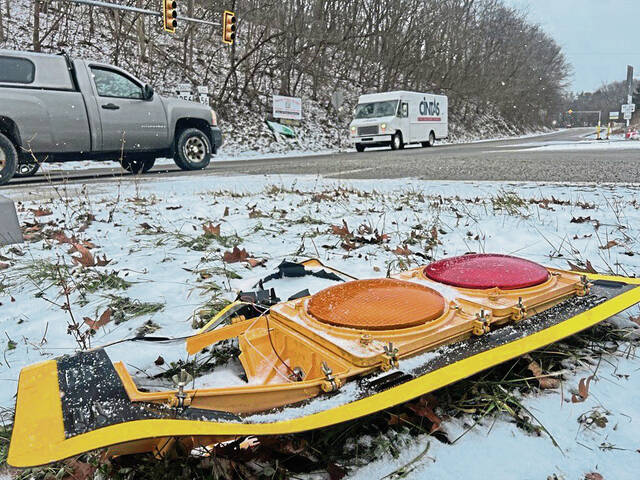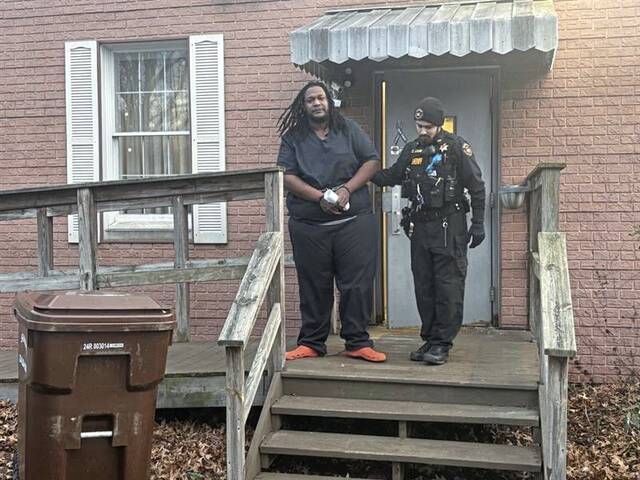When Terry Anzaldi took over as EMS chief of Lower Valley Ambulance Service in October 2023, he said reordering the foundering service was like putting together pieces of a puzzle.
In 2022, the service rang the alarm bells, saying it had entered a “financial crisis” and needed relief from local municipalities.
But, with a new board of directors and management team, Lower Valley has more than doubled its staff, placed its finances firmly in the black and just purchased several new emergency vehicles.
Lower Valley Ambulance serves Cheswick, Harmar, Springdale, Springdale Township, Verona and parts of Indiana Township.
Though he was in a new role, Anzaldi is no stranger to Lower Valley, having served as an EMT there in the 1990s. Then, he said, the service was “elite” in the area.
But he said previous management had been “inconsistent” and struggled to manage the financial aspects of the service.
“Let’s be honest: When I took over, Lower Valley was very fragmented. It was very broken,” he said.
Anzaldi helped to gather a new management team, including General Manager Jennifer Igo, who also worked at Lower Valley in the 1990s. Both agreed that the primary goal of Lower Valley is emergency care, but it ultimately needed to be run like a business.
The first thing Anzaldi said he did as chief was to scrutinize expense reports and bank statements line by line to halt any “unnecessary spending.” The process took nine months, he said.
Now, the chief said he checks the books every morning with his coffee.
To generate revenue, Anzaldi sought out contracts for nonemergency transports. These involve common, simple rides between facilities, such as hospitals and nursing homes. While not as high-stakes as some 911 calls, chauffeuring patients does provide a steady income stream to the service, the chief said.
In addition to those contracts, Igo and Anzaldi said they have brought in money by providing standby emergency services for large events like concerts and parades in Pittsburgh and aggressively pursuing grants with the help of local elected officials.
Plus, nearly all of the municipalities that Lower Valley serves began contributing a flat $15,000 to the service last year to provide what Anzaldi called a “cushion.”
Those funding boosts, he said, have also enabled the service to raise its wages by several dollars an hour and recruit heavily. In 2023, the service had about 12 employees. According to the chief, Lower Valley now employs 31 people.
Ken Igo, Jennifer’s husband, is a Springdale Township commissioner who serves as the president of Lower Valley’s board of directors.
Through its financial reorganization and recruitment, Ken Igo said, the service has “done a complete 180.”
“It was kind of neat,” he said. “We were able to actually cut costs, raise revenue and raise wages for our folks.”
On sounder footing, Anzaldi said, the service recently purchased two new ambulances and an emergency response SUV.
Those new ambulances have come equipped with mechanical self-loading gurneys that raise a patient into the ambulance’s cabin automatically, which, Anzaldi said, helps take the strain off his employees’ backs.
The service also recently acquired three mechanical CPR machines that perform automatic chest compressions on patients in cardiac arrest, the chief said.
But Anzaldi said Lower Valley is still teaching people how to do it the old-fashioned way. Though the service had not conducted classes for the community in several years, the chief said the most recent CPR course it held in Verona had more than 30 attendees.
Just last week, the service began stationing a crew at the Verona Municipal Building to avoid potential delays getting across Hulton Bridge, Anzaldi said.
Aside from its new advanced equipment, the chief said, part of Lower Valley’s reorganization involved renovations to its home base along Freeport Road in Harmar.
There, the service completely repainted, bought new furniture and framed dozens of old news clippings, posters and thank-you cards that can be found throughout the building. A 10-year-old goldfish in the downstairs crew room is one of the few things that remain unchanged.
At this point, Jennifer Igo and Anzaldi said, they are continuing to search for ways that Lower Valley can increase its presence in the community.
Thinking back to the 1990s, Igo said she wants residents to “respect the hell out of us.”
“We want to bring Lower Valley back onto the page where everybody wants to be us,” she said.
Part of that presence is simply getting to more calls, which Anzaldi said the service is doing.
In 2023, Lower Valley had to give up 15% of calls in its area to other ambulance services. In 2024, that number was down to 7%. And so far in 2025, the number of forfeited calls sits at 4%, Anzaldi said.
The service is on track this year, the chief said, to receive more than 6,000 calls — more than ever before.
“I want this place to be alive,” Anzaldi said. “And I want everybody to see it’s alive.”


